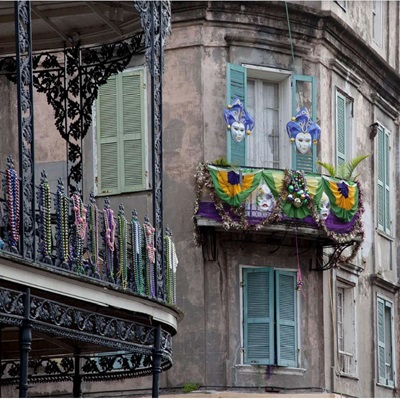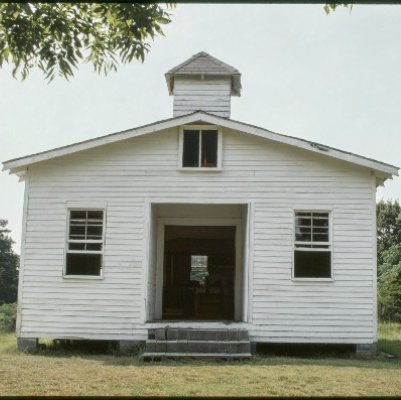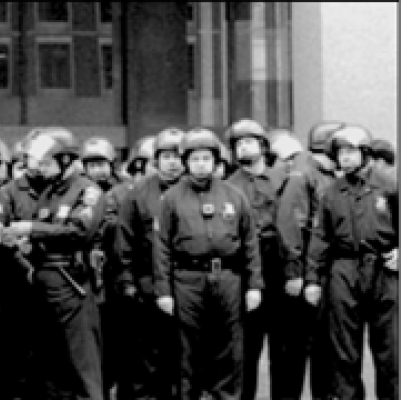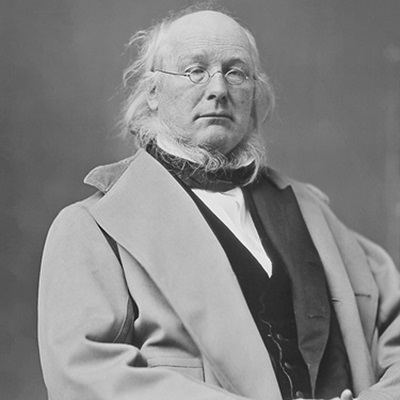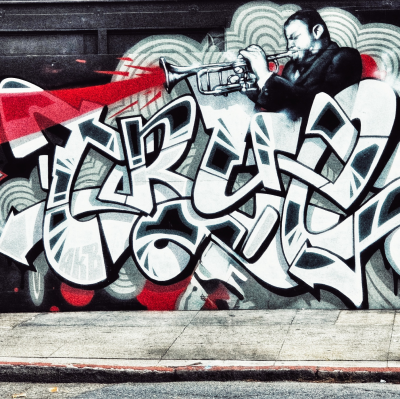Paul Bowles and Cherie Nutting
_____
Fifteen years ago, Cherie Nutting returned to Morocco. She had first visited it as a child with her mother, and the images of mystery and the desert had stayed with her, fueled over the years by accounts of expatriate life and by the literature created there. In Tangier again, she met the most famous of the expatriates and author of the classic The Sheltering Sky. Cherie became a friend of Paul Bowles and part of his circle. Over the years, the friendship deepened and widened.
Yesterday’s Perfume is a memoir of that friendship and of Cherie’s love of Morocco. Cherie discusses her friendship with this extraordinary artist in an interview with Jerry Jazz Musician publisher Joe Maita.
__________________________
JJM This is quite a book.. I am very happy to see a publisher give you this sort of quality canvas to expose this story on.
CN I was afraid I wouldn’t be able to find anyone who would do the book justice, because small publishers don’t have the money. I was very lucky to find Roy Finamore (my editor at Clarkson Potter), because he really has a good eye, loves the work, and spent a lot of time with me, editing the book and putting it together. I was very fortunate to find a major publisher that would put the money into it, knowing it wasn’t going to be a best seller, but loving the work. That was a dream come true for me.
JJM With few exceptions, all the photographs in the book are yours, correct?
CN Yes. There are a few that aren’t but most of them are mine. Bruce Weber and Peter Beard made contributions as well as a few friends.
JJM Tell me what your background as a photographer and journalist is?
CN As a photographer, I have always taken pictures since I was a child. My father took pictures, and my grandfather was a political journalist in Boston who gave me my first camera. Pictures have always been part of my life. As a child I guess that was the only thing I loved except for acting and sports. I didn’t really become devoted to photography until 1976, then I went 100% into it. I was teaching school in Massachusettes, and I opened a photography department. It’s been about 22 years since I started taking pictures seriously.
JJM Who was your childhood hero?
CN Davy Crockett!
JJM Davy Crockett? Why? Was it because you shared his adventurous spirit?
CN Yes. I wanted to be Davy Crockett. My grandfather on my mother’s side was another hero of mine. He was a pilot and a political writer and he had an adventurous spirit as well.
JJM You suggest in the book that your trip to Morocco as a ten year old was a defining moment in your life. What is your most powerful memory of that particular visit?
CN My most powerful memory is of watching the approach of the African Continent, day by day. It was a ten day trip across the Atlantic on the SS Constitution. I remember seeing that little tiny strip of land in the distance and the land becoming closer and closer. I lived in Boston and Maine as a child, and the two things I wanted to see and do the most were to climb a mountain and see the desert. When we got off the boat and my mother and I were traveling to see the sights in Rabat, I snapped a shot of what I thought was the desert, but it wasn’t. That’s what I really wanted to do the most, to go back to see the desert.
JJM Did you imagine yourself crawling over the dunes?
CN Oh yes.
JJM Did you do a lot of that as you got older?
CN Oddly, as I mention in the beginning of the book, the picture I took was not really a picture of the desert, so I call it the “false desert.” I went back to Morocco and got stuck there. I have been to the frontiers of the desert, which is in Morocco, but I never really crossed the desert. I’d like to.
JJM What event in your life made you seek out Paul Bowles?
CN I went back to Morocco in the 70’s and loved it there. I met my first husband and fell in love there. Toward the end of my marriage, my ex-husband handed me the book by Paul Bowles called “The Sheltering Sky,” and he felt that this book had been written for me. I read it and of course, I did feel that it had been. I cherished the book and I took it with me everywhere, even after we broke up!
JJM In retrospect, it’s pretty magical to be so touched by a book and then have the author enter your life and touch you so deeply on a personal level
CN It was very magical. The moment I read the book I knew that there was something in it which I felt was important to me. There were many aspects of “The Sheltering Sky” that touched me. The two main characters, Port and Kit, resembled my first husband and myself in some ways. There were many aspects in both characters that reflected parts of our relationship. We both loved North Africa and we both had such magical feelings toward Morocco. Paul was the only writer that affected me in that way. I really felt as if I had to meet the person who wrote this book. I can imagine that many people feel this way, and that is why they would try to visit him, but I just specifically felt as if this person must know me.
JJM How many years went by between the time you read the book and the time you made contact with him?
CN I read the book in 1978, and I made contact with him in 1985.
JJM You actually wrote him and suggested that you come and do some sort of a photo essay of him?
CN I broke up with my husband shortly after I read the book, and in 1980, I moved to New York. I was having crazy dreams of birds smashing into my right eye, which I know sounds silly, but they were. Something from inside told me that I should write to Paul Bowles. I had read an article about him – the first one I had ever seen- by Jay McInirney (SP) in Vanity Fair, and I felt right away that I wanted to photograph Bowles, which was a certain part of my process of personal change as a result of going through my divorce and getting into my photography more deeply. For some reason, I just thought that I would write Paul a long letter. There was something about him that I must know. My idea was simply to meet him, photograph him, maybe do a short photo essay on his daily life. I wrote him a ten page letter and he answered it and invited me to visit him. I did. I was intending to visit for one day, and I stayed a month. I went home, and he invited me to come back. Two months later, I returned. I could have stayed there forever.
So many things were happening in my head. I had so many dreams that seemed to become materialized. I met Mohammed Mrabet as well, and this amazing thing would happen almost every day. I would have a dream and the next day something from the dream would be mentioned without my having mentioned it. I just felt that I needed to continue following this trail and see where it led me.
JJM Clearly you made a connection with him and the culture. What was it that connected you and Paul Bowles so instantly?
CN I don’t know what his connection was to me I could tell that he liked me a lot. For me, I walked into his salon that first night and it just seemed that I should be there. I simply fell in love with him immediately, and I couldn’t get him off of my mind. I have been in love with him ever since.
JJM He had a love for the exotic world of North Africa and he certainly had a love for the use of kif. Between the two of these experiences, much of his life was spent in “other worldly” environments. The two of you seemed to have that in common
CN We are both only children. Only children tend to do that because we don’t have anyone else to talk to. So we create stories and pretend we are other people.
JJM His childhood was marked by solitude and dominated by a pretty distant father. How did that shape his life?
CN He didn’t even see another child until he was about six years old, so he was all alone, often locked in his room. Since he had taught himself to read and write by the age of four, he would create his own world writing stories, operas, plays and he even wrote his own newspaper for the adults. He would write backwards so that nobody would understand what he was saying. Thus, he had a pretty deep interior life at that time. I know he was obsessed with drawing houses during his childhood as well. His father didn’t like him doing all these things. He didn’t have anybody else to play with, and his parents didn’t seem to care about that. I as a child had friends, but I was alone a lot, surrounded by adults. In that way, we were alike. When you are alone as a child you have to create your own fantasies.
JJM At one point during the book you said, “It wasn’t what Paul said that captured my attention, so much as the complete charm of his demeanor.” What was his demeanor and how did it show up in his work?
CN When he spoke with journalists he had a different face, much as an actor puts on his mask before each performance. He was charming, witty, and was a very good mimic. He could imitate people such as Truman Capote and Virgil Thompson…Thus he was a very good actor, not that he wasn’t being real. When he was alone with his friends he’d let down some of his defenses and he could be very funny. He was a very private person and he shielded himself with his diplomacy. It was hard to get to him. In life he was subtle and could be hard to read. Often I didn’t know what he was thinking and so didn’t know how to respond. I would have to read between the lines to interpret his true feelings and I found that this was what was beautiful about him but at times it could be quite annoying. His work is also subtle and one must pay attention to the spaces in between the words to fully appreciate the writings. A landscape could be described in detail yet for example; if a couple had sexual relations, the act would be artfully described or implied. That was one of his major complaints about Bernardo Bertolucci’s film of “The Sheltering Sky.”
JJM Tell me about that …What was his take on the results of the film?
CN He hated it.
JJM I was reading a comment on this film made by Leonard Maltin, and he didn’t have much good to say about the film either. In fact, he said something to the extent of how impossible it is to put to film any stories by Paul Bowles. I don’t agree with that at all, in fact I think it could be incredible filmmaking.
CN I think it could be also. The other problem with that film was that it was marketed as a “coffee table” type book as opposed to a “black and white” photo book, if you think about it in those terms. It was too soft and pretty. It needed to have a sharper edge.
JJM I actually liked the film, but I saw it well before I ever read the book. The moodiness of it was really intoxicating. It’s not something I would recommend to everyone, but I think people who enjoy creative filmmaking would find something in there.
CN Yes. Some people actually did like it. I suppose if I hadn’t read the book and if I didn’t know Paul I may have liked it better. I think it was miscast. As I said before, it needed to be harsher it was too glossed over, soft and pretty and it seemed to have no point. The photography was beautiful, however.
JJM Paul Bowles’ career started as a composer, and his mentors were Aaron Copland and Virgil Thompson. He once said he would prefer to be remembered as a composer
CN Yes, he loved his music more than his writing.
JJM When you were with him, how much of his life was devoted to music? Did he compose frequently?
CN When he moved to Morocco, he found it very difficult to compose music because he couldn’t really keep his piano tuned nor see his work performed and gradually he gave up composing after he started writing more and living continually in Morocco. I only know the last 15 years of his life, and I know he composed on the synthesizer for the American School Plays. They are quite beautiful pieces. possessing a whistful and mysterious tone. I think a German company has released them on CD, although I am not entirely sure of that.
JJM Is there a particular piece that he wrote he was most proud of?
CN I am not sure, but I would say he would have really liked his Concerto for Two Pianos and Orchestra and the Latin American piano pieces
JJM When you sat with him and he said “I want to play you a record album,” what would he play for you?
CN He would often play Stravinsky and Poulenc and Copland or Samuel Barber but he enjoyed all kinds of music. Sometimes he’d play Pygme music for me and other favorites such as John Lurie or John Cage. He loved Moroccan Jilala music which he referred to as “the real hot jazz.” He admired Steve Reich as opposed to Phillip Glass.
JJM They are both either listenable or unlistenable depending on your state of mind, I think. Reich is pretty remarkable, as is Glass, but Reich is very special
CN I don’t know why he had a peeve with Glass but loved Reich
JJM It could be that Glass was too popular!
CN He was nuts about composing. If you called yourself a composer, he had certain prerequisites. I know that it was easier for him to speak about a book. He was “softer” when it came to speaking about other people’s books, whereas with music he was very precise about what he liked and didn’t like.
JJM In other words, he was fairly open minded about literature, but no so much about music.
CN Yes. He liked Poulenc a lot. Though he listened to jazz, he didn’t like free jazz. He hated rock and roll but loved Tom Waits.
JJM Did he like the spoken word audio tribute CD’s, in particular the Bill Laswell produced Baptism of Solitude?
CN I was involved with that, and Bill Laswell came to me and I talked Paul into doing it. Paul didn’t like it much. He was willing to do it, but he wanted to hear it before it was released. He also didn’t want any background music. He didn’t believe spoken word recordings should have any music. This was the deal that was made. Sure enough, the tape was released and there was background music. He asked Bill to change it, but I guess it was too late. He did, however, like “100 Camels in a Courtyard”, a spoken word recording on Cadmus Editions.
JJM His music was called by some critics as “downright chummy,” and some felt Bowles ‘intent was “to please.” His writing, on the other hand, is pretty dark and violent.
CN Yes, his music expressed his cheerful and romantic side and the writing exposed his dark side.
JJM Yes, earlier you said he wasn’t open minded about music. Maybe it was so personal to him, the music side of him
CN Yes, he was very strict about what he liked and what he didn’t like, and sort of “old school” too.
JJM What was his influence on the beat generation writers? What was the genesis of this?
CN The beats looked at him as a sort of guru, and as a leader. He was older than they were. He didn’t regard himself as part of that generation, and in fact he didn’t always like their work.
JJM Was it “The Sheltering Sky” that was the connection that guys like Keroauc and Ginsberg made to Bowles?
CN I don’t know, really. I am not sure if he met them before he wrote “The Sheltering Sky” or afterwards. It’s hard to tell what attracted people of such diverse character to both Paul and Tangier. It’s probably a question that they themselves would have to answer. Paul would receive phone calls from some of the Beats. Allen Ginsberg once telephoned Jane (Paul’s wife) announcing himself as The Beat Poet. Jane would reply, “What’s a ba-at poet?” I think that many of those in the beat generation thought Paul’s writing was old fashioned, whereas they thought their own writing was hip and cool.
JJM Toward the end of your book, dreams were a significant part of that theme. Did you find yourself more aware of your subconscious as Bowles’ death became near? Did the two of you discuss dreams more frequently during this time?
CN When Paul started writing pieces for my book, it was the summer of 1997. His vision was failing but he could still read and write. A few weeks later his vision became worse and he could no longer continue. In the winter of 1998 when he’d become almost completely blind, I went back to be with him in Morocco. I thought that we could get some work done on tape. However he wasn’t able to work at all. Thus the thing I would try to do each day was to get him to talk about his dreams. The final chapter is filled with dreams, his and mine. What was so odd about some of them was that I would have a dream and the next day they would appear in a book I was reading that he may have given me. Or an image in my dream was in his dream. I guess in the end, that’s what it was. I became much more aware of death and loss. I had just been divorced again as well, so I was going through my own problems. I guess I became aware of my age, of myself being mortal, and watching Paul begin to slip away from me.
JJM You were really privileged to be with him at this point of his life, because old age is a beautiful thing, particularly when you can be around someone who understands life at the level he did.
CN Yes, his brain was extremely alert until the day he died.
JJM When was the last time you saw him?
CN I saw him last in 1999. I left him in September, thinking I would go back. The only reason I left was because I had a contract to do this book, and I had to have everything done by October. I spent the summer with him, and I remember him saying to me “why do you have to go back?” I told him because I had to go finish the book in the next month and I hadn’t even started it yet. I told him I would be back right after I completed my work. I was hopeful of getting back to see him in November, but there were finishing touches on the book that required me to stay. My book was being submitted at the moment he died on November 18, 1999.
JJM One of the great parts of the book was a letter he wrote concerning giving interviews. He didn’t like to grant interviews, and in fact called them “absurd.” In one of his letters he considered literary critics “arch ogres” because of their penchant for getting his intent wrong. Given his experience and his cynicism, do you have any reservations about doing interviews yourself?
CN I have had things misquoted, yes. But, for the most part, I have not had many bad experiences.
JJM Have you been pleased with the response given “Yesterday’s Perfume?”
CN Yes, I have. I’ve had some reviews and letters from fans claiming they liked the book, one a very flattering letter from Gore Vidal. I know that there was one review on the Internet that called the book “a fantasy.” Yes, of course it is. It is my vision of what happened, but it is based in fact. There are dreams that weave throughout the plot. It is an autobiography as well as a biography. Basically, it is a personal memoir of a 15 year friendship. It’s a light hearted picture book. I am not a biographer nor do I want to be!
*
*
JJM Yes. What I got out of it was your very personal relationship that you were fortunate enough to share with the rest of us. It is an “art book,” a book about connections between two people, told in words and photos
Ultimately, what is Paul Bowles’ legacy? What will the world remember him for? Obviously, he was a writer, a composer, but beyond that, and on a deeper level, what is it that you would like the world to remember about him?
CN He was a rebel. He will be remembered for his books, primarily, and his interesting lifestyle. I hope my book will let people know what a beautiful man he was in old age, and how growing old does not make someone incompetent or unattractive. He was sexy and beautiful until the end, as well as being flirtatious and charming. He still had a childlike quality, and in fact he never really did grow old. He was an incredible artist, and a very kind person. He may have seemed aloof to some people, but he was a very generous person to those around him.
JJM What does your future hold?
CN I have a number of projects in mind but first I’d like to work on a book concerning Tangier.
JJM Would you do the authoring as well?
CN I would do some of it, but I would photograph, design and write pieces where applicable but I’d perhaps collaborate with and incorporate other artists as well. Although my recent focus has been Tangier and Morocco I feel that the concept of this book is appropriate to many more locations across the world.
_________________________
*
Yesterday’s Perfume: An Intimate Portrait of Paul Bowles
by
Cherie Nutting
_____
*
*All photographs are courtesy of the author, Cherie Nutting, and appear in the book, Yesterday’s Perfume: An Intimate Portrait of Paul Bowles . They are published as part of this interview with the permission of the author.
_______________________________
If you enjoyed this interview, you may want to read our interview with Jack Kerouac’s musical collaborator David Amram.






